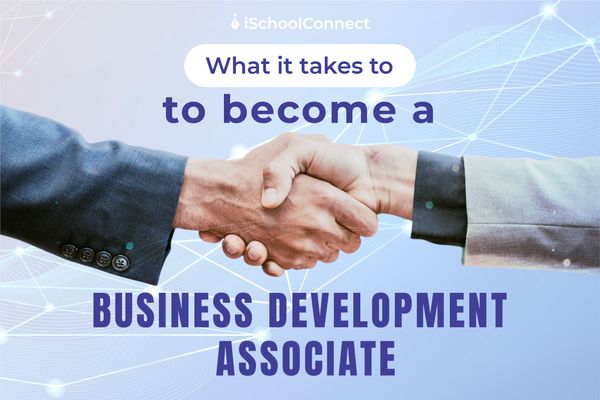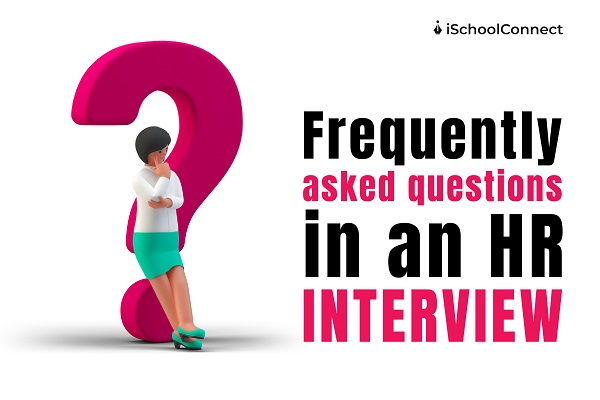Table of Contents
Being nervous before an interview is quite normal. However, try not to lose your focus and breathe. If you have prepared well in advance, you have nothing to worry about. As a part of your preparation, develop a robust self-introduction. It helps in creating a great first impression on your interviewers.
So to craft the best self-introduction! But, let’s first understand a bit more about what a self-introduction for an interview is-
1. What is a self-introduction for interviews?

A job portal defines self-introduction as “A self-introduction explains who you are, what you do and what others need to know about you”. This type of introduction can be given out any time you meet people, either at the personal or professional level.
For example, you can use a self-introduction when –
- You begin an interview
- Attend a recruitment drive
- Network with professionals in your field
- Give a professional presentation
- Meeting new people at a trade show
But, it has a special application during interviews and this is where most candidates face a hard time.
2. The best self-introduction for interviews
To deliver the best self-introduction, there are four important things you need to integrate into your response. These four components give the interviewer an overview of who you are, both personally and professionally.
It also allows the interviewer to make a positive initial judgment. This will create a strong building block for further questioning. Let’s look at these four important components-
Who you are?
This part of your self-introduction should be all about who you are as a person. Therefore, you need to begin with your full name and briefly talk about your personality traits. Don’t hesitate to throw in your likes and dislikes in this part of your response, as it adds more facets to your character.
Where do you come from?
Include your place of birth, where you currently live, as well as some information about your family background (be brief). This will give the interviewer a chance to assess your cultural background. This helps interviewers understand if you will fit in well with the company culture.
What is your qualification?
A concise statement about your educational qualifications is also needed in your self-introduction for job interviews. Although the details of your educational qualifications are given in your resume, it is always a good idea to add in a brief about the same in your self-introduction. You can also mention any extra-curricular activities you have been a part of.
What are your professional traits?
Finally, your self-introduction should also include some of your professional traits. These can include any job-specific attributes as well as general transferable skills, such as those of communication, leadership, teamwork, dedication, and perseverance. Talk about some projects you have been a part of so that the interviewer has a more concrete perspective of your competencies.
3. Self Introduction for Freshers in Interview

It may be overwhelming to develop a self introductory statement from scratch. So, here is a guide to developing a meaningful and effective self-introduction for interviews that can help you secure a job!
- Start by stating your full name, where you live, and your professional aspirations.
- Next, you can mention your immediate family, where they live, your permanent residence, your current residence, as well as your place of birth. Integrating a few of these details into your self-introduction can often give you a chance to build rapport with the interviewer in the rare instance that you share the same hometown with the interviewer.
- After this step, you will need to have all your educational qualifications placed on a table in front of you in chronological order. Make a note of these and prepare a carefully concise summary of your entire educational journey. This is one of the most important steps in the self-introduction in interviews for freshers.
- However, if you are an experienced candidate, then apart from the educational qualifications, you also need to mention the most important aspects of your professional experience and competencies.
Also, remember to keep all of this brief as you have less than 60 seconds to give your introduction.
4. Self Introduction Sample for Job Interviews
So now that you are aware of the format as well as the ways to prepare such a statement, have a look at some of these samples. Change your answer according to the position and company you’re applying. Here is a template to draft your self-introduction statement.
Hello, my name is (your full name). I am from (name of your hometown) and I currently live in (name of your current residence). I’ve completed my diploma/graduation/post-graduation in (name of your course) from (name of your University).
I have worked on a few projects in the past that have helped me gain good time management and creative skills. I have always been a keen learner and volunteer on my days off.
Along with this, I have also been part of several leadership workshops/any other professional competency-building activity and am able to stay focused under pressure.
While this was a template, let’s look at a self-introduction statement.
“Hi, I am Sunil Kumar. I am from Delhi and have completed my Bachelor of Engineering degree in 2009 from NIT Patna.
I got hired by a renowned IT company through the campus placement. I have been working with the company for almost a decade now. I have learned the ins and outs of IT operations in my journey from a fresher to a manager.
My qualifications and work experience make me a suitable candidate for the profile. I am looking to join your organization to explore new dimensions and for the further development of my skills.”
5. Things to Avoid in Self Introductions

There are quite a few things you should avoid saying in a self-introduction. So let’s get have a look at them.
- Avoid giving out too much personal information.
- Don’t appear boastful. This type of overconfidence is never considered a great sign of job interviews.
- You also need to be aware that you are not simply citing everything that is already given in your resume because a self-introduction usually covers information that is not in it.
- Also, never ask the interviewer about what they want to know because it could lead to the assumption that you have come unprepared.
- Finally, do not waste a lot of time on your self-introduction because the time limit during your personal interview round is limited. This is one of the most crucial tips for a simple self-introduction for interviews.
What’s Next?
Since self-introduction is such an important part of interview preparation, it is best to begin practicing your communication skills early on. The best way to do this is to frequently interact with peers and also participate in co-curricular activities like debates and extempore at school.
The skills you develop doing these activities will help you in the future to draft an impressive and convincing self-introduction for interviews. Additionally, a key point to remember is to keep your introduction short and to the point. Avoid talking for over 60 seconds.
If you like reading tips like this you can read our other blogs and get in touch with us if you have any doubts.
You can also comment below and share your thoughts.
FAQs
1. How to end a self-introduction for an interview?
The final piece of information that you need to use to end a self-introduction is your work experience. Avoid saying ‘so yeah’ at the end.
2. How to prepare a self-introduction for an interview?
You can use the steps outlined here to prepare your self-introduction for personal interview rounds. Apart from that, you can also try practicing your introduction in front of a mirror to learn the best facial expressions and non-verbal communications that are required in an interview.
3. Where to find self-introduction for interview samples?
You can easily find several such samples online using which you can model your own self-introduction statements.












This is really great !
Hey Hiren,
We are glad you liked the blog, you may also find this interesting- F1 visa interview questions and how to answer them